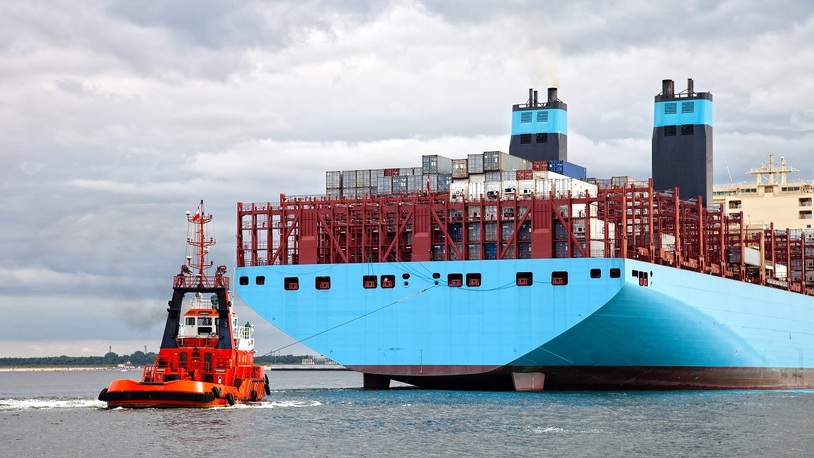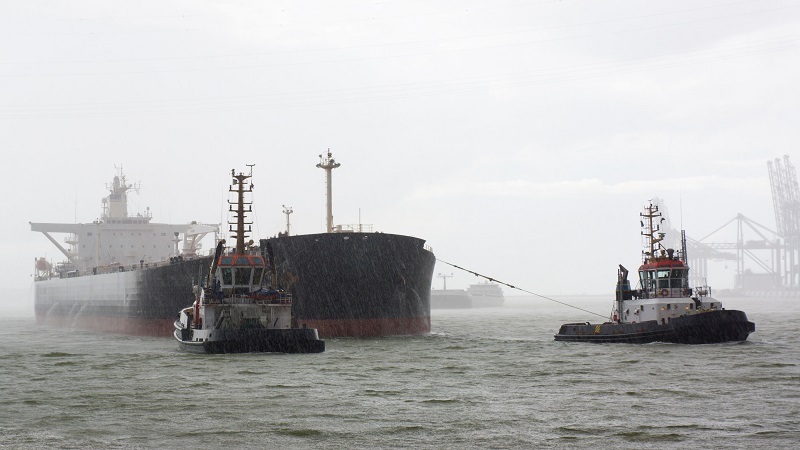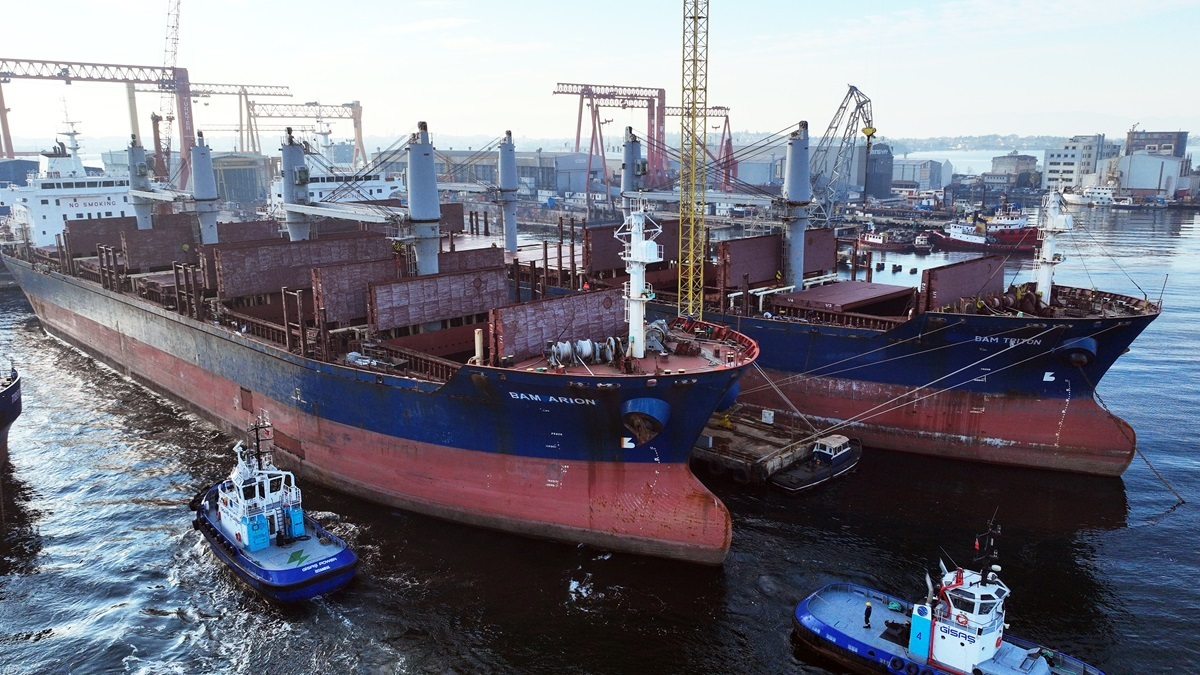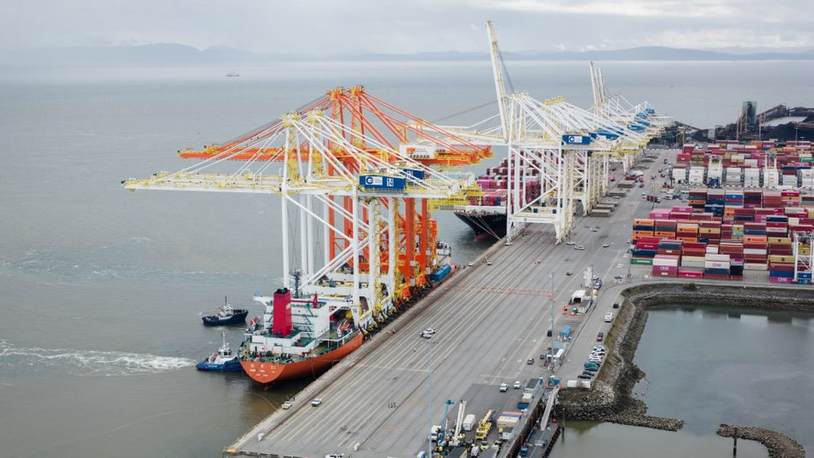Business Sectors
Events
Contents
Hauling the tugboat industry towards electric towing winch solutions
Traditionally, hydraulic power has been dominant for marine towing winches, especially on vessels such as tugboats. But the tide is turning, as next-generation electric winches are rapidly replacing hydraulic units on tugboats, explains Mikael Holmberg, Winch and Crane Segment Sales Manager at ABB Drives.
 |
Until recently, hydraulic systems have been utilised by approximately 70% of marine vessels worldwide. However, many years of development have increased the sophistication of electric winches, meaning that they now provide superior performance, reliability, safety and, crucially, energy efficiency. As a result, hydraulic power sources, including hydraulic power packs, and hydraulic motors and oil pipes are now starting to be replaced with electrical drivetrains comprising motors and variable speed drives (VSDs). |
Working side-by-side with many of the biggest winch manufacturers in the deck machinery industry, ABB has developed motor and VSD packages which feature prominently in these next-generation electric winches. As well as deck machinery winches, we are developing solutions for special offshore winches like tugboat towing winches.
Our motors and drives intended for use in tug applications have marine certification, which is critical for gaining acceptance in this industry. This is good news for vessel operators looking to move away from hydraulic systems to reduce high maintenance requirements and the risk of environmental damage due to oil leakages.
Safer, simplified tugboat winch control
At ABB, our deep application experience has enabled us to develop drives and motors that allow smooth, safe, and precise winch operation that also reduces wear on the ropes and winch.
At the core is an integrated drive-motor-control based on a closed loop system with encoder feedback from the motor or drum. This differs considerably from previous designs. The encoder is also used for monitoring the rope length during the tugboat winch operation.
ABB’s direct torque control (DTC) platform within the VSD makes precise motor control and operation possible in all conditions, at full torque, over the complete speed range. This has enabled the creation of a specific tugboat winch control application with leading OEMs.
Built-in software (or dedicated tugboat control operations) in the ACS880 drives manages the process of towing (escorting) the load with a defined distance between tugboat and vessel and also pushing.
Escort mode
In the escort mode, the winch acts as a brake with force limitation set by the operator in order to maintain the tow distance, which is set by the operator as the rope length. The mechanical brake is disengaged. At any time, the operator can intervene to haul or payout the rope and the system automatically accepts the new rope length as the set tow distance. The operator sets the maximum force limit via the force potentiometer or overriding controller.
Push mode
In the push mode the winch maintains constant force (tension) on the rope and always pulls the rope in the winding direction with a low force set by the operator. The purpose of this mode is to maintain a constant tension on the rope so that it can be wound or unwound without interfering with operations. The operator sets the winding force limit via the force potentiometer or by overriding controller.
Roll alert and auto roll compensation
A very specific additional feature, roll alert and auto roll compensation option with an external motion reference unit (MRU), is also available. With roll compensation enabled, the line force limit (maximum tension in the ropes) automatically decreases or increases according to the measured roll angle. This is a feature that stops the tugboat operating at dangerous angles - and potentially overturning.
Optimal energy usage and easier maintenance
The ultra-low harmonic (ULH) and regenerative characteristics of the ACS880 electric drives for winch and hoist applications are also important to note. These drives offer accurate speed and torque control for various motor types and have been developed for harsh maritime conditions. They are suitable for new installations and retrofits of existing tugboat winches. Both types produce exceptionally low harmonic content to help keep the vessel’s electrical network clean from unwanted disturbances.
The regenerative drives also help to simplify the installation by eliminating the need for an external braking resistor, making installation simple and requiring less cabinet space. It is possible to regenerate 100% of the power with these drives continuously, if the network onboard can accept the regenerated braking power. If this is not possible, other approaches might be required, such as water-cooled braking resistors or batteries.
The ACS880 winch drives (HW) also feature a removable memory unit that stores the total software and settings for faster and easier commissioning and maintenance. The flexibility of the variable speed drive software application makes it easier to add or modify winch functionality with adjustable and programmable parameters from a keypad or laptop/PC. All parameters and signals are accessible for operators to define their own technical requirements.
Converting hydraulic winch applications to electrical operation improves energy efficiency and safety while also reducing any unnecessary wear and tear caused by, for example, excessive tension on the winch cables. As a result, maintenance costs are also reduced.
Take a second look at electric winch systems
With its simplified control and clean operation, the tugboat market is taking a second look at the newest generation of electric winch systems. But as with any high-tech investment, the OEM/winch machinery builder should test winches and motors to confirm they meet the required performance levels and functionality.
For further information visit new.abb.com/drives/segments/winches
Related to this Story
Events
Maritime Environmental Protection Webinar Week
The illusion of safety: what we're getting wrong about crews, tech, and fatigue
Responsible Ship Recycling Forum 2025
© 2024 Riviera Maritime Media Ltd.














